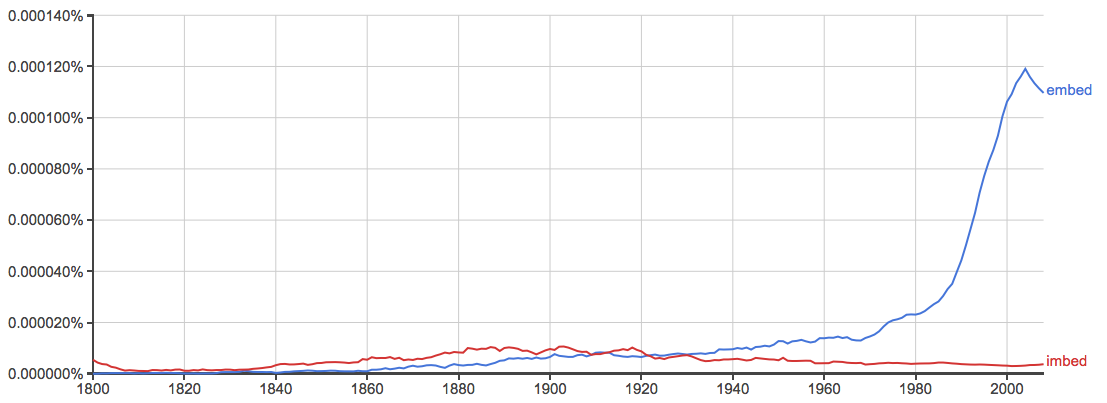English is rife with words that are spelled almost the same but mean completely different things.
Much less common in English are words that are spelled slightly differently but still have the same meaning.
Imbed and embed belong is this second category. To cut right to the chase, they mean exactly the same thing. Still, one of these words is a better choice in writing situations where word choice is important, like academic and professional writing.
What is the Difference Between Imbed and Embed?
In this post, I will compare embed vs. imbed. I will use these spellings in example sentences, so that you can see them in context. Plus, I will show you a helpful memory tool that you can use as a reminder of which spelling to use in which situation.
When to Use Embed
 What does embed mean? Embed is a verb. It means to nest something within something else. In the tech industry, some computer components are referred to as embedded solutions, and reporters who are attached to a military unit in a conflict location are called embedded journalists.
What does embed mean? Embed is a verb. It means to nest something within something else. In the tech industry, some computer components are referred to as embedded solutions, and reporters who are attached to a military unit in a conflict location are called embedded journalists.
Here are a few more examples,
- Thousands of years of pressure embedded the diamond in a coal vein deep underground.
- If you embed a piece of chocolate within raw cookie dough, whoever eats the cookie will receive a tasty surprise.
- China’s government plans to embed cybersecurity police units at major Internet companies and websites to help prevent crimes such as fraud and “spreading of rumors,” state-run Xinhua News Agency reported Tuesday. –The Wall Street Journal
Embed is a regular verb, and its conjugation scheme is relatively simple, as conjugation schemes go.
Here are a few forms of embed in common tenses,
- I/we embed: first person singular and plural present tense
- You embed: second person singular and plural present tense
- He/she/it embeds: third person singular present tense
- They embed: third person plural present tense
- Embedded: simple past tense
- Embedding: present participle
When to Use Imbed
 What does imbed mean? Imbed is an alternative spelling of the same word. Neither form is more correct; they are both accepted spellings.
What does imbed mean? Imbed is an alternative spelling of the same word. Neither form is more correct; they are both accepted spellings.
- Despite Google’s support of Clinton, and Trump’s tendency to hold grudges, the tech behemoth may very well succeed in its efforts to imbed itself in the new power structure. –The American Spectator
That said, since the dawn of the computer and Internet age, embed has emerged as the clearly preferred spelling.
The graph below, which charts the relative usage of imbed vs. embed shows embed as the clear winner in common usage.

As you can see, the two variants were used about the same amount until around 1960, when writers started using embed much more frequently. Then as the dawn of personal computing began in the 1980s, this gap widened even more and has continued until the present day.
Trick to Remember the Difference
Technically, you could use either embed or imbed whenever you wanted. They are both correct. Since embed is so much more popular, though, it is probably the best choice for formal writing contexts, like academic and professional writing, or in computing contexts where it is likely to dominate.
In the case of embed vs. imbed, neither spelling is incorrect, but one spelling is more correct than the other. That is a good way to think about the two.
Since embed begins with the same three letters as the verb emblazon, it should be easy to remember to emblazon your writing with embed instead of imbed.
Summary
Is it imbed or embed? Imbed and embed are spelling variants of a verb that means to put something in something else.
To summarize,
- Embed is the better choice, even though imbed is not technically incorrect.
Contents
